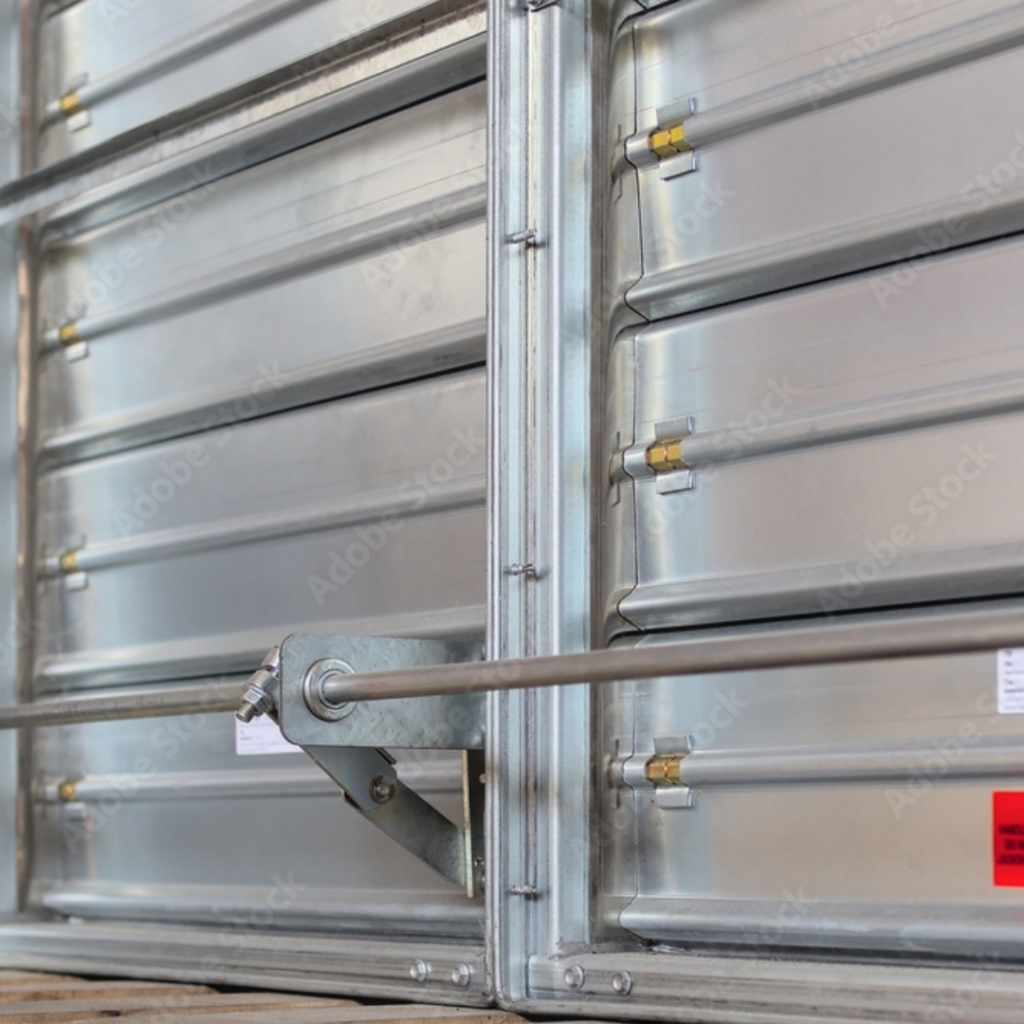
When contemplating the essential components for your HVAC system configuration, dampers play a vital role. Dampers, including various types of dampers such as automatic dampers, manual dampers, parallel dampers, opposed dampers, balance dampers, bypass dampers, and fire dampers, become a crucial consideration. The pivotal question arises about the type of dampers to install. The plethora of damper options available might overwhelm the layperson. Let’s delve into the various categories to gain a comprehensive understanding of the dampers’ wide range of choices.
What are the Blade Types of Dampers?
Let’s start by examining dampers categorized by blade type. Two styles of damper blades exist: parallel and opposed. In the parallel type, the blades function akin to a louvered shade, opening and closing together. When closed, each end rests over the one beneath it. This damper style finds its primary use in ducts with fixed airflow.
For opposed blade style dampers, the blades rotate in the opposite direction, creating a tighter seal when closed. This configuration enables a more uniform downstream airflow from the damper.
How do Automatic and Manual Dampers Differ?
As the name suggests, automatic dampers function autonomously. These systems can also be remotely controlled and programmed to self-regulate in response to varying climate conditions. Manual dampers, on the other hand, necessitate manual adjustment according to desired airflow. This can pose challenges if they are positioned on or near the ceiling.
How Do You Classify Dampers by Application?
Depending on whether you’re considering dampers for home or commercial use, and whether it’s a large or small commercial building, the required type may significantly differ. Each one serves a specific purpose, making it suitable for specific situations.
The primary damper types include control, balancing, backdraft, multizone, industrial, and safety dampers.
Control dampers: These are installed at various ductwork junctures to regulate airflow throughout the HVAC system. They can also help mix hot and cold air to attain the ideal temperature zone for occupants. Control dampers regularly open and close the blades multiple times each day.
Balancing dampers: Qualified technicians install and adjust balancing dampers after assessing the room’s atmosphere and setting the precise blade angle. They come into play when dealing with difficult-to-heat or -cool rooms or unreasonable drafts. Once the technician locks the blades, adjustments require technician intervention.
Backdraft dampers: Installed to allow one-way airflow, these types incorporate shafts on one end of each blade to prevent air from flowing back in the opposite direction. If necessary, a counterbalance can assist.
Multizone dampers: Designed for buildings with a single air handling unit, such as small business offices or schools, multizone dampers connect to multiple ducts and regulate system-wide airflow.
Industrial dampers: Deployed in factories and power plants, industrial dampers are engineered to handle substantial airflow and withstand extreme conditions. They endure temperatures exceeding 250 degrees Fahrenheit and intense air pressure.
Safety dampers: Among the most critical ones are safety dampers, including fire, smoke, and combination fire/smoke dampers. Fire dampers incorporate fusible links that melt in the presence of fire, promptly closing the damper through gravity or spring action. This halts fire spread through building ducts.
Smoke dampers function similarly, closing when encountering smoke, heat, or predetermined variables. Fire/smoke dampers combine fire and smoke safety protocols in one unit, operating on the same principle.
Why are Fire Dampers so Important?
All dampers play a role in air control and airflow. Fire dampers (and smoke) are vital as they prevent hazardous conditions from propagating. Instead of managing temperature, these dampers obstruct flames and smoke movement through building or house ductwork. Fire dampers are automatic in operation.
When a fire damper detects excessive heat, its fusible link melts, automatically closing the damper. This action instantly cuts off the oxygen supply to the duct, starving the fire of fuel.
Similarly, a smoke damper safeguards inhabitants by preventing smoke passage through ducts. Fire dampers and smoke dampers are pivotal for employee and resident safety.
What are the Types of Fire Dampers?
Two types of fire dampers are available, based on builder requirements:
Dynamic fire dampers are typically situated within HVAC system vertical barriers. They remain spring-loaded and continue to function during fires. When a fire is detected, built-in fans activate spring-loaded dampers, cutting off airflow and protecting the building.
Static fire dampers are designed to instantaneously halt airflow upon fire detection. These dampers are found within horizontal barriers. When activated, all fans stop due to air pressure loss, preventing fire spread.
Although various damper types exist, they all serve the same premise – managing airflow. Some provide comfort by blending hot and cold air for ideal indoor temperatures, while others are essential for safety. Fire dampers, smoke dampers, and combination fire/smoke dampers are critical to preserving life when fire threatens. Choosing between dynamic and static types, and employing these dampers ensures building safety and code compliance!




